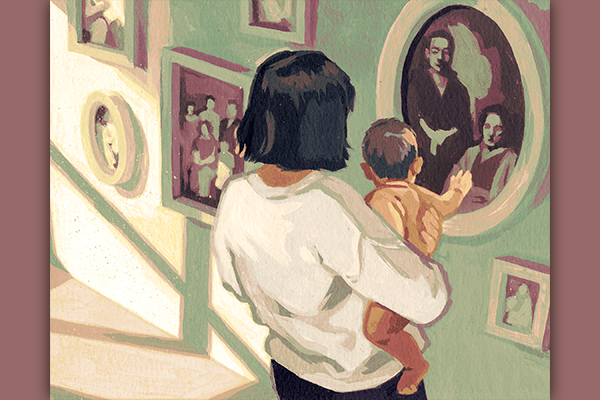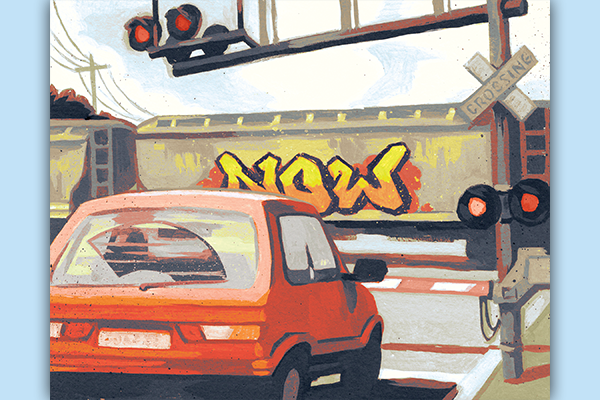How do I tell my children that they would be considered crimes against nature, that in another moment their very existence would be an affront against God and order?
It is a lesson that I am unprepared to teach as a father. How am I supposed to shatter fairytales and make-believe with stark lessons of the past that continue into the present?
“A long, long time ago,” I begin, then falter.
The history of race and racism is not past and it was not long ago.
I am at a loss and so as the world burns, I escape outdoors into the poetry of creation, hoping that if indeed in the beginning there was the word that I may find a few there.
Pink butterfly. Yellow flower. Pretty deer. There, the vernacular of my children’s observations runs into another language meant to measure and categorize difference. Kingdoms. Phylum. Classes. Species. These words organize deviations and discrepancies into an assured and legible arrangement.
It is a taxonomy with which I am unfamiliar, but one that was borrowed and applied to humans.
In 1910, a commission led by Senator William P. Dillingham published its finding as The Dictionary of Races of Peoples. Congress was concerned about the “true racial status” of the various groups moving into the nation and they wanted to properly classify them. Objectively, authoritatively, and most certainly, they wanted to impose scientific order on difference. Blue eyes, black hair, brown skin, attractiveness, were not mere observations, but measurements evidencing superiority and inferiority. White, black, yellow, brown, and red were not only differences in pigment, but distinct and separate races. This racial hierarchy was organized in descending order: race, stock, group, and people.
Mixing across these biological divisions would only degrade the racial stock of the nation and result in its demise.
“Not that long ago, people wouldn’t have wanted momma and daddy to get married,” I try again to explain to my children.
“But you love each other,” replies my 4-year-old daughter.
How do I tell my children that in another time their parents’ love would be called an abomination, that in 1953, 17-year-old Raúl Arevalo was lynched in Texas for courting a white classmate, that until 1967, “race-mixing” was illegal across large swaths of the country?
“White people discriminated against Mexicans and other people with dark skin,” my wife and I explain more directly.
“But we’re Mexican,” my 6-year-old son responds. “And you’re darker than momma,” he adds. He’s made the connection and I can’t tell whether it is pain or confusion in his furrowed brow.
How do I explain that the history of this nation has been experienced differently, even though it was lived at the same time? Their great-grandparents on one side were part of the last wave of Anglo migration into South Texas where farmland and promises were plentiful. At the same time, their great-grandparents on the other side walked past signs that read: No Dogs and No Mexicans.
These are lessons that I struggle to teach as a father and a historian.
I avoid the lessons because I believe they will learn them and learn them repeatedly on their own soon enough. It will be a short time before someone tells them to go back to where they came from. It will be a short time before they experience microaggressions and overhear slurs. Yes, they will learn these lessons soon enough. But even in this, I am uncertain. As interracial children, they could pass. Their appearance will be read differently whether they are with their darker father or their white mother. They could very well yield to white privilege if not taught their history.
I have heard the calls to teach the history of racism in our country. The history of anti-Blackness in this country is older than the nation itself. Anti-Blackness is not just a cornerstone of the Confederacy. It has a long history across the Americas too. Various groups in the U.S. have also used anti-Blackness to achieve acceptance, protection, and benefits. It is not just white people who defend monuments to enslaving and conquest. Teaching that past is a duty that I take seriously, that I have made my life’s work as a historian. It is also one that I grapple with as a father of interracial children.
I can teach my children the past and its connection to the present. I can teach the important continuities and the crucial changes. But this is more than lectures and lessons on American history. This history runs through them, into them, and over them. This is not revisionist history; it is a reckoning in real time.
Got something to say about what you're reading? We value your feedback!







